As country’s central bank turns 65 today, a commemoration of roles played over the decades
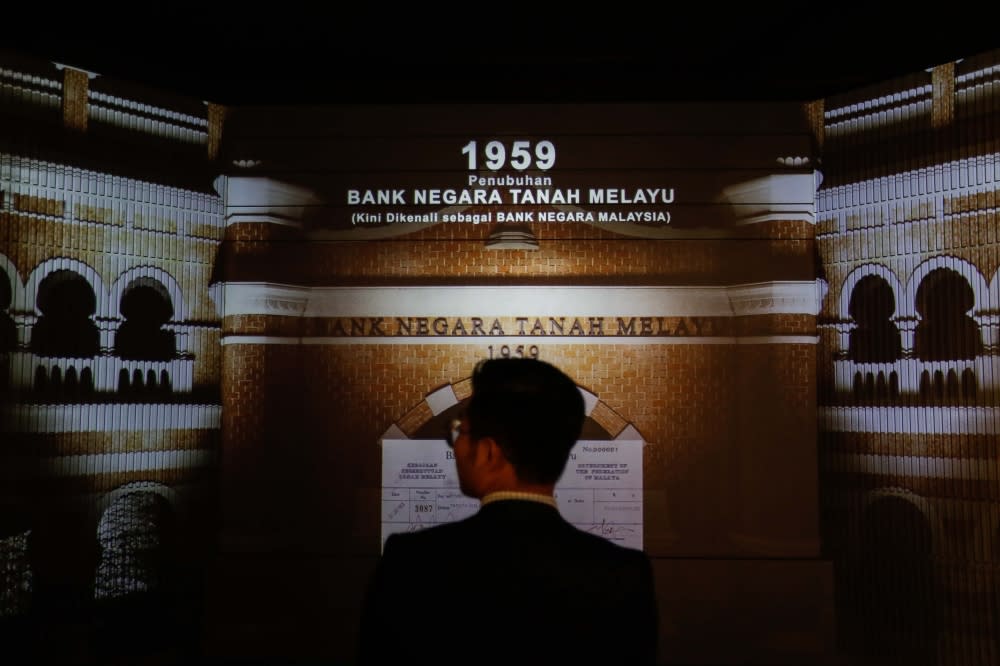
KUALA LUMPUR, Jan 26 — Twenty million Malaya and British Borneo dollars. That was the cheque amount written and issued to Malaya’s first Bank Negara Malaysia (BNM) governor Tan Sri William Howard Wilcock by the late Tun HS Lee in 1959 for the establishment of the Bank Negara Tanah Melayu (Central Bank of Malaya) or more commonly known as BNM in the present time.
The true copy of this cheque, one of few timeless artifacts currently on display at BNM Museum and Art Gallery at Sasana Kijang near the city centre, serves as a symbolic milestone to the Central Bank’s crucial role in promoting monetary and financial stability throughout Malaysia for over 65 years since.
In conjunction with its 65th anniversary today, Malay Mail was allowed to explore the BNM’s Museum and Art Gallery to delve into the Bank’s historical role in the nation’s economic development and financial landscape.
The museum is situated less than a kilometre away from the Bank’s brutalist style inspired headquarters, which has served as the Bank’s head office since relocating from its original headquarters in Sultan Abdul Samad building at Dataran Merdeka in 1971.
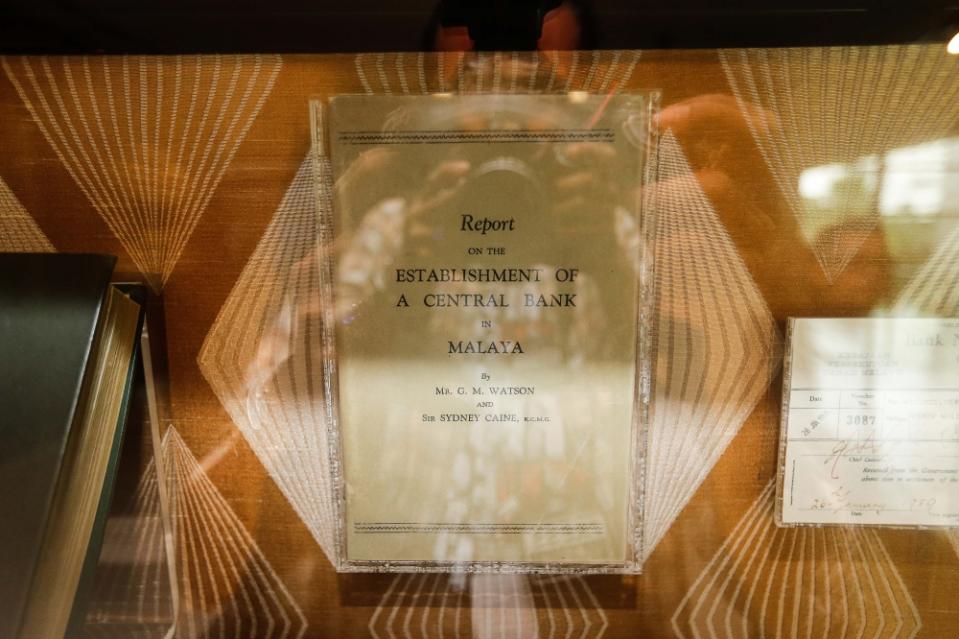
A report on the establishment of the central bank. — Picture by Sayuti Zainudin
With over 65 years of shared history with the country’s founding, one aspect that remains most telling is BNM’s ubiquitous logo — a Kijang or barking deer — that shares a historical significance with the Central Bank’s inception as the sole authority in issuing the national currency.
“There is the tale of a queen, Cik Siti Wan Kembang who had a pet barking deer she was so fond of that she inscribed its symbol on the Kelantan gold coins, which was among the earliest coins of the Malay Sultanate,” BNM Gallery assistant curator Nor Nadia Ahmad Zulkifli told Malay Mail of the logo’s inspiration.
According to Kelantanese folklore, the kijang is her favourite pet and has always been fond of it since she was young; while some stories suggest that there was once an Arab trader who came to her domain who sought permission to trade and presented a muntjac — referred to as the barking deer — to the Queen as a gift which she later ordered for its image to be inscribed.
The first Malaysian BNM Governor, the late Tun Ismail Mohamed Ali later conceived the idea of having the Kijang motif for the official logo of the Bank due to its associated prestige before its adoption was formalised in 1964.
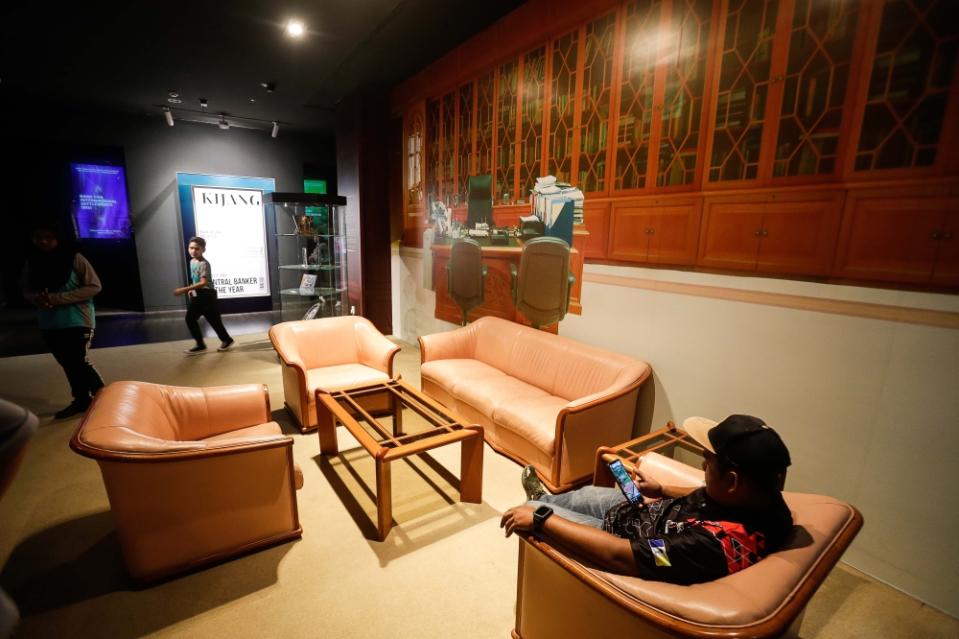
The 65th anniversary of BNM is important for the public as it not only commemorates a significant milestone but also offers a chance to appreciate the progress made over the years. — Picture by Sayuti Zainudin
Bearing witness to Malaya and then Malaysia’s growth as an independent developing nation, the Central Bank has played a significant developmental role in developing the country’s financial system infrastructure including advising the government on the formulation of macroeconomic policies that affect the nation’s development.
So much so that the Central Bank has also persevered through every known economic crisis the country has undergone since its founding, all of which are meticulously documented in the Bank’s Economics Gallery.
A vast chronicle of the various policies the Central Bank played a pivotal role in formulating are also put on display through newspapers articles over the decades here.
One gallery exhibit in particular depicts a large freighter with shipping containers stacked atop one another, whereupon unfolding them will showcase Malaysia’s international trading partners and their traded commodities.
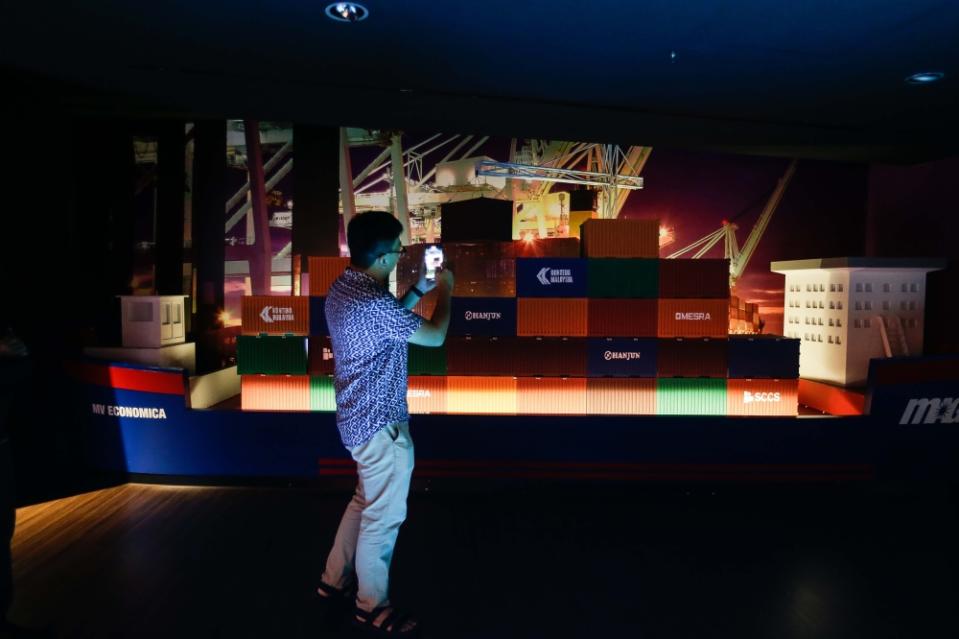
A visitor snaps a picture of one of the exhibits at the Economic Gallery at Sasana Kijang. — Picture by Sayuti Zainudin
“One of our primary roles is to manage the country’s international reserve and also to serve as the banker and adviser to the government,” BNM’s Economics Gallery assistant curator Atikah Khalil told Malay Mail recently.
When the British Empire regained control of Malaya from Japanese occupation after World War II, the Board of Commissioners of Currency, Malaya and British Borneo was the sole authority in issuing the national currency then.
Before the Malaya and British Borneo dollar, the Straits dollar was the currency of the Straits Settlements of Singapore, Melaka and Penang alongside the Federated Malay States and the Unfederated Malay States up till 1939.
However, it was not until 1967 that Malaysia only began issuing its national currency, with the current banknote series now well into its fourth iteration introduced in 2012.
Like all artifacts linked to the Bank’s founding, the decades of Malaysia’s currency history is also journeyed in BNM’s Numismatic Gallery where one can glimpse into how far our legal tender has evolved with the Central Bank’s guidance.
In particular, one part of the exhibit showcases rejected design examples of Malaysia’s banknotes throughout the year, including one that features an artistic depiction of a prominent figure mentioned in the semi-historical Malay Annals or Sejarah Melayu.
The aforementioned Kijang coin that inspired the Central Bank’s logo can also be found on display here, along with several historical iterations of it.
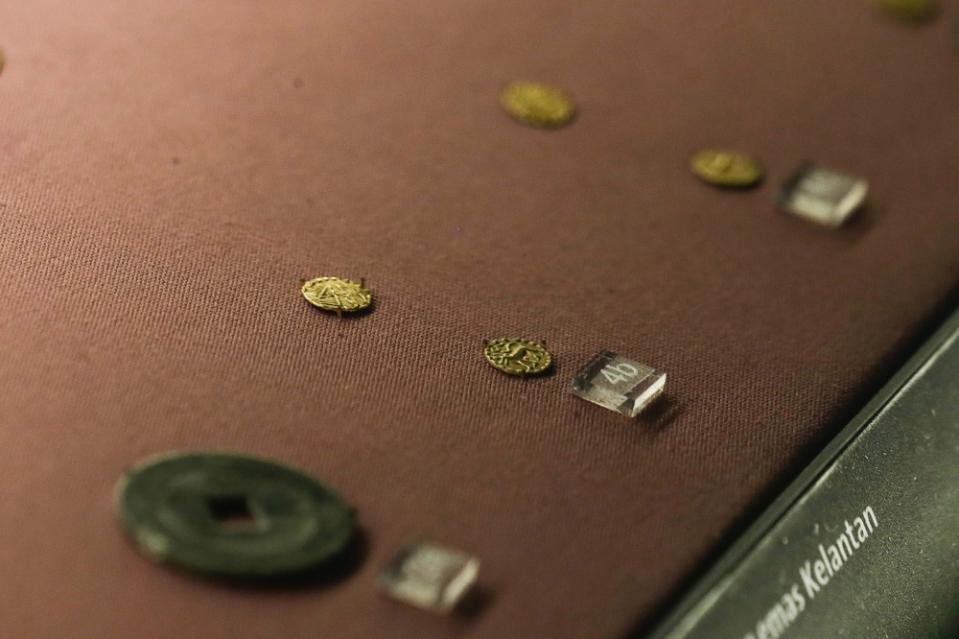
Like all artifacts linked to the Bank’s founding, the decades of Malaysia’s currency history is also journeyed in BNM’s Numismatic Gallery where one can glimpse into how far our legal tender has evolved with the Central Bank’s guidance. — Picture by Sayuti Zainudin
Promotion, communication and media manager of BNM Museum and Art Gallery Gabrielle Evelyn Lee stressed on the importance for the public to understand BNM’s historical significance and evolution as an important institution in the country.
“The 65th anniversary of BNM is important for the public as it not only commemorates a significant milestone but also offers a chance to appreciate the progress made over the years.
“Understanding the Central Bank’s evolution over 65 years can foster trust and inform public discourse about our roles.
“We welcome everyone to explore our rich history at the BNM Museum and Art Gallery, discovering the institution’s evolution, pivotal moments and contributions to the economy,” she told Malay Mail during the museum visit ahead of the Central Bank’s anniversary.
For visitation, Bank Negara Malaysia Museum and Art Gallery is open from Tuesday to Sunday from 10am to 5pm. Closed on Mondays and the first three days of Hari Raya Aidilfitri.



